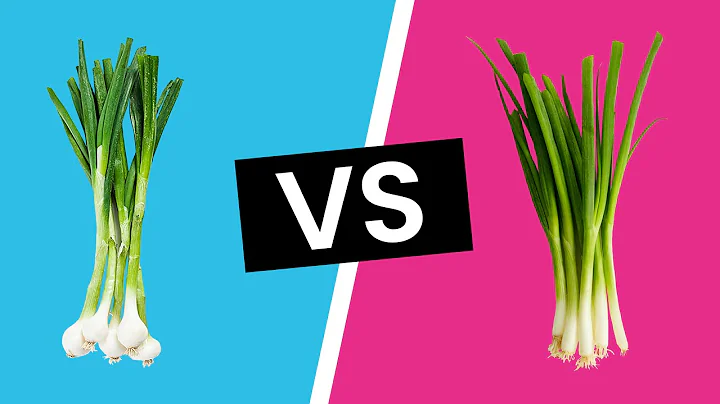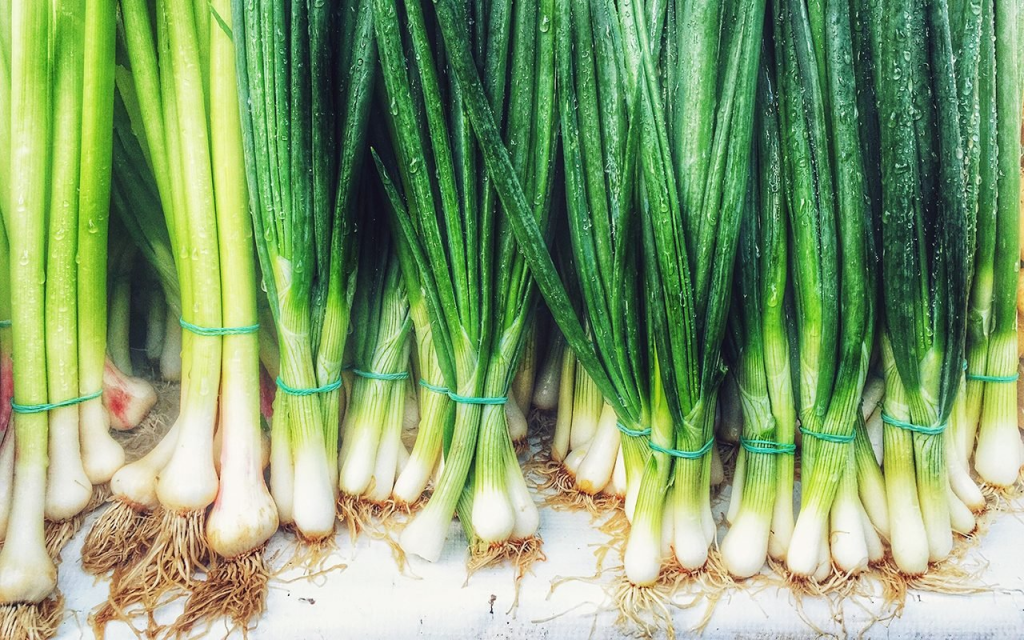Sometimes, even the simplest grocery items can spark a surprising amount of debate. Recently, I found myself on the receiving end of a lesson from my mother-in-law after bringing home what I thought were green onions, only to be told (rather sharply) that they were scallions. That left me wondering—are green onions and scallions truly different, or are they just two names for the same thing? Let’s dive into the details to clear up the mystery behind this common kitchen conundrum.
Understanding the Confusion: Are Green Onions and Scallions Really the Same?

The confusion between green onions and scallions is common and understandable. Both terms are often used interchangeably in recipes and grocery stores, leading many to believe they’re identical. But here’s the twist: the difference, if there is one, often depends on who you ask and where they’re from. To unravel this mystery, we need to take a closer look at these popular vegetables and explore the nuances that may set them apart.
What Exactly Are Green Onions?
Green onions, also known as spring onions in some parts of the world, are young onions harvested before their bulbs fully develop. They have long, slender green stalks and a small white bulb at the base, making them look like young onions in miniature form. The entire plant is edible, and it offers a mild, fresh onion flavor that’s perfect for a wide range of dishes. Green onions add a subtle kick without overpowering the dish, making them ideal for raw applications like salads, garnishes, and more.
So, What Are Scallions?
Scallions are very similar to green onions, and, in most cases, they are the same plant. Like green onions, scallions have a white base and long green stalks, and they’re harvested early before a large bulb forms. Interestingly, the term “scallion” is preferred in certain parts of the United States, while “green onion” is more commonly used in other English-speaking countries. Despite the difference in name, both green onions and scallions can be used interchangeably in cooking since their flavor, appearance, and uses are essentially identical.
The Botanical Perspective: A Case of Regional Naming
From a botanical standpoint, both green onions and scallions belong to the Allium fistulosum species. This species is known for its lack of a fully developed bulb, which separates it from mature onion varieties. This botanical similarity explains why they’re often considered the same plant, even if different regions and cultures have distinct preferences for what they call it. In practical terms, there’s no need to worry too much about choosing between green onions and scallions—they are essentially two names for the same thing.
Using Green Onions and Scallions in the Kitchen
In the kitchen, both green onions and scallions bring a fresh, mild onion flavor that complements countless dishes. They work well in both raw and cooked applications, making them versatile additions to many recipes. Here’s a look at some popular ways to use green onions or scallions:
- Raw: Sprinkle thinly sliced green onions or scallions on salads, tacos, and soups for a burst of color and a hint of onion flavor.
- Cooked: Add them to stir-fries, soups, or sautés. They soften quickly and add a mild onion note that doesn’t overwhelm the dish.
- Garnishes: Use chopped green tops as a vibrant garnish for dishes like baked potatoes, grilled meats, or noodle bowls.
Because they’re so similar, you can freely substitute green onions for scallions or vice versa in any recipe without sacrificing flavor or texture.
Common Misconceptions and Regional Variations
One of the main reasons people get confused about green onions and scallions is regional terminology. In certain areas, “spring onion” refers to a different stage of growth, while in others, it’s used as another term for green onions or scallions. Adding to the complexity, different varieties of onions may be labeled differently in grocery stores depending on local customs. Understanding these regional differences can be helpful, especially when cooking with recipes from various cuisines.
Dealing with Criticism in the Kitchen: Staying Calm and Informed

It’s always a little frustrating when someone criticizes your shopping or cooking choices, especially when it feels unwarranted. In the case of green onions versus scallions, misunderstandings are common, and family members might have strong opinions based on their own culinary background. If you find yourself facing criticism for a simple mix-up like this, take it as an opportunity to learn something new. Staying calm and curious can turn a tense moment into a chance for growth (and maybe even a laugh!).
A Quick Guide to Telling the Difference in Stores
When you’re at the store, you might notice different labeling for green onions, scallions, and spring onions. Here’s a quick guide to help:
- Green Onions and Scallions: Look for thin, green stalks with a small white bulb. If you see these, you can usually assume they’re interchangeable.
- Spring Onions: These are often older than green onions and may have a slightly larger bulb that resembles a small onion. They’re stronger in flavor and are best cooked to mellow their taste.
Most of the time, you’ll find that green onions and scallions look identical and are virtually interchangeable, while spring onions have a stronger flavor and larger bulb.
Conclusion: Embracing the Simple Joy of Cooking
In the end, the debate over green onions and scallions is a reminder that culinary terms can be a little complicated, and everyone’s perspective is shaped by their own experiences. Although these two names may cause some confusion, the important thing is to focus on enjoying the process of cooking and experimenting with flavors. Whether you call them green onions or scallions, these mild, fresh alliums are wonderful additions to countless dishes.
So next time you’re at the store, pick up a bunch without worrying too much about the name on the label. Embrace the adventure, enjoy the flavors, and remember—sometimes, the simplest ingredients spark the most interesting conversations in the kitchen!


